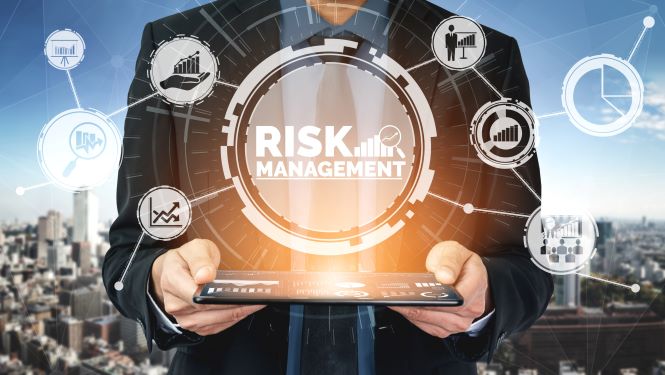OWNING MANAGING AND DELIVERING A DIGITAL PROJECT
When thinking about digital projects, most people immediately think of websites, content, online advertising and campaigns, social media, events, and videos. While this of course true, a digital project is much more than that. In today’s world, any business transformation in a company touches the digital world in how it interacts with employees, suppliers, customers, government agencies, business partners.
With content from 15 of our original eLearning modules, this course package provides a practitioner view of translating digital transformation theory into action.
Table of Contents

Managing a Digital Project
So, what is a Digital Project? Most people immediately think of websites, content, online advertising and campaigns, social media, events, and videos.
While this of course true, a digital project is much more than that. In today’s world, any business transformation in a company touches the digital world in how it interacts with employees, suppliers, customers, government agencies, business partners.
Digital projects touch on the following 3 areas:
- The company’s business model
- The customer experience, whether internal or external
- The company’s business operations and processes
Any project today that has an impact on or alters any of these areas will have a high degree of digital embedded in it.
In this module, you will learn:
- What is Digital Project Management?
- How is a Digital Project Different?
- Digital Project Manager Responsibilities
- Digital Project Manager Must-Haves
- Digital Project Manager Basic Skills
- Digital Project Management Methodologies
- Digital Project Management Tools

Managing Project Scope
To understand project scope management, we must first understand project scope, which describes the product, processes, or services to be delivered.
Defining project scope is critical to the success of the project since it spells out exactly what the product, services, and/or deliverables of the project look like.
Conversely, poor scope definition might lead to cost increases, rework, schedule delays, and poor morale.
This module helps you understand and prepare for scope management by exploring the following topics:
- Managing Scope – What Does It Mean?
- Collection of Requirements
- Tools and Techniques to Collect Requirements
- Documentation of Requirements
- Scope Verification
- Scope Change Control

Managing Stakeholder Expectation
An expectation is a strong belief that some things will happen in the future. Or that someone or something will help us achieve the things we expect to happen.
A stakeholder is a person or part of a group who has a vested interest or “stake” in a project or initiative. They have an interest in the success of the project. Stakeholders can have either a positive or a negative influence on the project and its success. Stakeholder expectations depend on a lot of factors and situations, and on the stakeholder. Expectations and requirements can be based on myriad functional and non-functional needs, almost always aligned with business strategy or innovation.
In this module, you will learn:
- What Is Stakeholder Expectation Management?
- Why Do We Manage Stakeholders?
- Things to Consider About Stakeholders
- Indications of Misalignment – and How to Fix
- Getting Stakeholders on Your Side
- Six Tips for Managing Stakeholders

Managing Virtual Teams
In today’s world, so much of what we do for work is done by teams of people who are in different physical locations, and often in other parts of the world, and in different time zones.
Whether we like it or not, this is how business is conducted today. Companies are going more and more regional, if not global. While this is certainly true for our clients, it also holds true for consulting companies. The talent required to serve clients is located in other cities, and countries.
This module will introduce you to the advantages and disadvantages of virtual teams, success factors, methods and tools to work in the virtual world. As you progress through this module, you will learn:
- Virtual Teams: Advantages and Disadvantages
- The Different Types of Virtual Teams
- Skills Required to Function Effectively
- The Role of Leadership in Virtual Teams
- The Required Success Factors

Managing a Digital Project or Initiative
Digital initiatives tend to cross functional and department lines and boundaries, involve multi-disciplinary teams, are executed in different ways, and finally, the ROI associated with them can be difficult to prove and calculate.
We will highlight what we feel is true ownership for a digital project and initiative, and illustrate the similarities and the differences between ownership, sponsorship, project management, and the project stakeholders.
You will learn what it means to own or be responsible for a digital project or initiative, and how to be successful in its execution, including:
- The Value of Engaged Executive Sponsors
- Project Sponsorship vs Project Management
- Traits of an Effective Project Sponsor
- Must-Look-Fors in Sponsors
- Difficult Project Sponsors
- Project Sponsor Must-Asks

Researching
Researching is an essential part at all points of engagement with clients. From cold calling to stakeholder management, having the facts about the internal and external imperatives for clients is critical. To help you understand some research strategies, and how to use them effectively, this module explains:
- The 8 Different Types of Research
- What Research is Most Often Used in Consulting
- Where is Business Research Most Often Used
- How to Conduct Business Research
- How to Obtain Industry and Company Intelligence
- Looking Beyond the Numbers and Results

Solutioning
Solutioning means the process of finding a solution to a problem. It is about:
- Innovation and creativity, on how to create new products and services
- Better, faster, and more efficient ways to do things,
- Solving problems,
- Discovering and creating new markets; markets that meet unknown, and untapped client needs and expectations.
As a result, innovation requires drive and discipline, to select and execute the best ideas and solutions. The first mover advantage is critical here, and what were traditionally the driving forces, such as technology, cost, and quality control, are now gravitating to creativity and speed to market, to stay ahead of the competition.
This module teaches the essentials of solutioning, including:
- What is the Approach to Solutioning?
- Six Steps to Problem Solving
- Innovation and Creativity in Problem Solving
- When Conventional Thinking Fails
- Creative Problem Solving

Successful Teams
Today, our world has become very small, as technology bridges us from different locations, cities, countries and even continents. In another module, we have touched on the essentials of working together virtually, and what it takes to be successful.
In this module, we will focus on the dynamics and ingredients of successful teams, whether they work in one location, multiple locations, or even completely virtually. We will introduce you to and expand on what we feel are the key factors that separate successful teams from mediocre ones. This includes:
- The Habits of Highly Successful Teams
- Required Elements of Teamwork
- Some Views on Team Development
- Characteristics of Effective and Ineffective Teams

The Customer Journey
Customer journey maps came into vogue in the design and development of digital products. Yet they can be applied to any project or process that aims at improving a customer experience.
In this module, we introduce the Customer Journey in a series of progressive sections in which you will learn:
- What Is a Customer Journey Map?
- Why Is a Customer Journey Map Needed?
- Customer Journey Map Benefits
- How Does It Work?
- The Elements of a Customer Journey Map
- How to Create a Customer Journey Map
With informative videos and interactive knowledge checks and quizzes, this course module will give you a grounding in the customer journey, and equip you to begin one.

Working in a Matrix
Today’s working practices reflect a connected, interactive global economy. The days of working in the same space with the same people for years is long gone. Instead, mobility, agility, collaboration and virtual working environments are the norm.
For consultants, who have to work in this matrixed environment, spanning the physical world of client engagement and virtual teams requires a high level of awareness and skill. Mastering the matrix is a fundamental skill for every level in consulting.
In this module, you will learn:
- What is a Matrix Organization?
- What is Matrix Management?
- Advantages and Disadvantages in Matrix Management and in Matrix Project Management
- Matrix Leadership
- What are the Key Required Skills?
And we summarize some of the critical success factors.

The Business Model Canvas
The Business Model Canvas (BMC), enables a structured, established organization to evaluate and reflect on whether a business model is effective or not. In the form of a visual chart, it has elements describing a firm’s or product’s value proposition, infrastructure, customer base, and financial structure.
The BMC assists firms in aligning their activities by illustrating, discussing, and deciding on the potential trade-offs. It introduces a systematic approach to focus on a business model segment by segment. It allows for a clean review and discussion by brainstorming the segments, one by one, and to compare several options or paths required to innovatively impact the business model.
The business canvas is also sometimes referred to as strategy-on-a page. Topics covered in this module are:
- What is the Business Model Canvas
- The 9 sections of the Business Model Canvas
- What are the elements of the Business Model Canvas
- The Business Model Canvas for Startups and Entrepreneurs

Water versus Agile Project Management
Traditionally, waterfall project management has been the predominant way to complete most projects. However, during the past 20 years, we have seen a strong increase in the use of agile methodologies. Over just the past ten years, the use of agile has nearly quadrupled. Up to 90 percent of organizations use some form of agile. Figures indicate that half or more companies use agile to manage a majority of their projects.
This has a severe impact on project managers who come from a traditional project management background, especially keeping in mind that there is not a formally defined role for a project manager in agile methods.
We compare the methods here through exploration of the following topics:
- A brief introduction to Waterfall
- An introduction to Agile Project Management
- Plan-driven versus Adaptive Project Management
- The Hybrid Agile Approach

Systems Thinking
In this module, we will introduce you to systems thinking. Some definitions will be helpful. A system is a group or combination of components that work together to achieve the intended goal or objective. A failure or weakness in one of its components will cause the system to fail.
Systems thinking is an innovative way to look at what we see and to construct a mental framework of it. The entity or construct is looked at as a whole, keeping in mind its functioning in relationship to a larger context or to the environment.
We explore this through the following topics:
- What is systems thinking
- How to use systems thinking
- Why and when to use systems thinking
- What are the other types of thinking

Blue Ocean Strategy Thinking
Strategic success is linked to innovation by creating a market space that is uncrowded and fertile, delivering growth for companies, and more value to their customers. This space is the blue ocean, in contrast to the red ocean, filled with the competition eating each other.
The blue ocean strategy challenges companies to stay out of the red ocean of bloody competition by creating an uncontested market space. This renders the competition irrelevant, or at least defers their market entry.
We explain the blue ocean strategy and how to make the shift by explaining three topics:
- What is the blue ocean strategy and how does it work
- What is the blue ocean strategy shift
- What are the 5 steps of the blue ocean strategy shift

Project Risk Management
Whatever project we undertake, they all have inherent risk associated with them. We need a risk management strategy for each project, so we can effectively deal with the ramifications resulting from each of the risks.
In this module we introduce you to project risk management by exploring the following topics:
- What is Project Risk Management?
- How pervasive is risk?
- How to Identify and assess risks
- How to mitigate risks
- How to plan and control risks
- How to deal with opportunities arising from risks
- How to manage project risks
- To develop a risk management plan